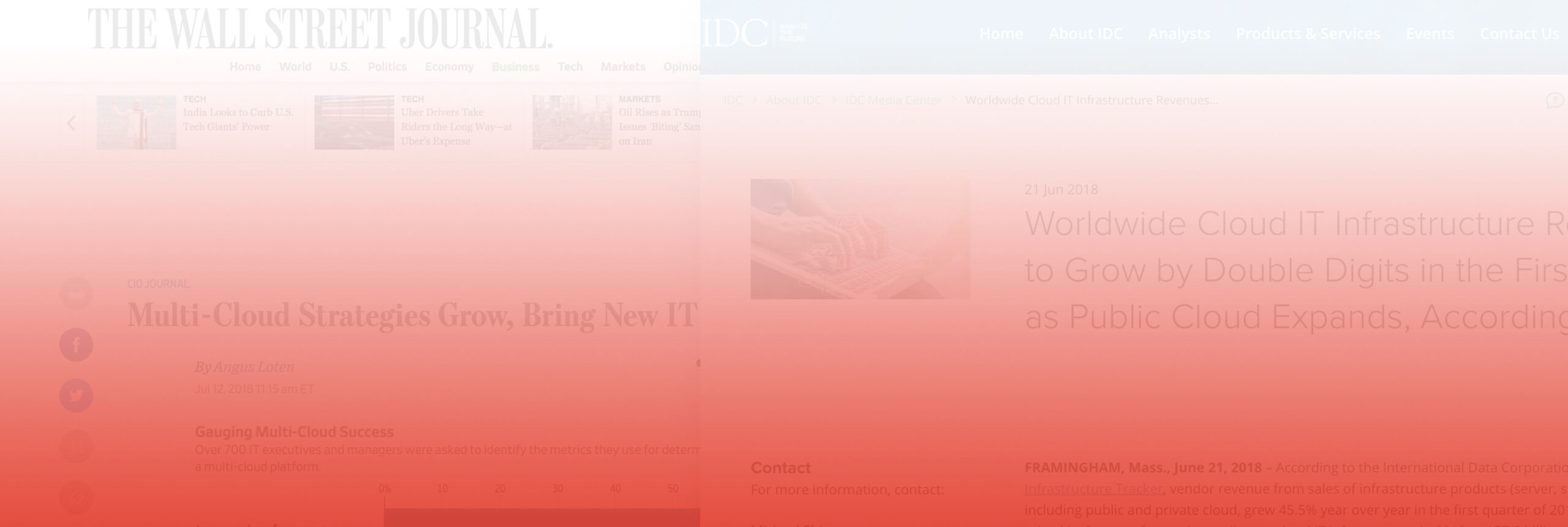
Cloud Computing News #3: Cloud strategy is a must-have
Post • 3 min read
This week we focus on cloud strategies.
How and Why Leaders Must Implement Cloud Computing
“Organizations that do not have a high-level cloud strategy driven by their business strategy will significantly increase their risk of failure and wasted investment,” says David Cearley, vice president and Gartner Fellow. According to Gartner, a cloud strategy defines the business outcomes the enterprise seeks, and how to get there. Instead of thinking about it as installing new technologies, adopt a cloud service from an outcome perspective. What do you want the cloud to accomplish, and the enterprise to gain? Gartner highlights 4 key points for creating a cloud strategy:- Select the right cloud option: it is vital that technology strategic planners select the option most aligned with the enterprise goals and needs .
- Think bimodal: a cloud strategy must address both modes based on the overall business strategy and the degree to which the business is focused on aggressively pursuing digital business.
- Categorize cloud service options based on benefits and challenges.
- Define guiding principles for the ideal way for cloud adoption to occur within the enterprise.
Multi-Cloud Strategies Grow
Wall Street Journal reports on two recent separate surveys on the adoption of cloud services: According to a study by Forrester- 86% of firms already in the cloud have a multi-cloud strategy.
- Over half of the respondents said they have been spending between $10 million to $100 million a year on multi-cloud services.
- Why multi-cloud then? Reasons for that vary from safeguarding data by backing it up in cloud storage across different vendors, to taking advantage of different services offered by competing platforms, or simply as a bargaining for better prices.
- Midsize to large companies currently use an average of 8 different cloud providers - and this number is expected to rise to 11 within the next two years.
- Most firms plan to “adjust their cloud strategy” within the next two years, aiming to improve performance.
Public cloud infra quarterly revenue has more than doubled in the past 3 years
According to the cloud market growth data by International Data Corporation (IDC), digital transformation is moving enterprises into the cloud. "Public cloud has been growing the most. Digital transformation initiatives such as edge computing and machine learning have been bringing new enterprise workloads into the cloud, driving up the demand for higher density configurations of cores, memory, and storage", says Kuba Stolarski, research director for Infrastructure Platforms and Technologies at IDC. Vendor revenue from sales of infrastructure products for cloud IT grew 45.5% year over year in the first quarter of 2018 (1Q18), reaching $12.9 billion. IDC also raised its forecast for total spending on cloud IT infrastructure in 2018 to $57.2 billion. Of this forecast, the public cloud will account for 67.0% of the total, growing at an annual rate of 23.6% Public cloud infrastructure quarterly revenue has more than doubled in the past three years to $9.0 billion in 1Q18, growing 55.8% year over year. Traditional (non-cloud) IT infrastructure revenue grew 22.0% from a year ago. Read more in IDCCloud enablement, advisory and strategy at Nordcloud
Our Cloud Enablement Services help your organisation to take advantage of the public cloud. We have a number of cloud advisors at Nordcloud, who are on hand to assist our customers with their journey to the cloud.
Read more about our services here or contact us here.
Get in Touch.
Let’s discuss how we can help with your cloud journey. Our experts are standing by to talk about your migration, modernisation, development and skills challenges.

Ilja’s passion and tech knowledge help customers transform how they manage infrastructure and develop apps in cloud.
Ilja Summala
LinkedIn
Group CTO
